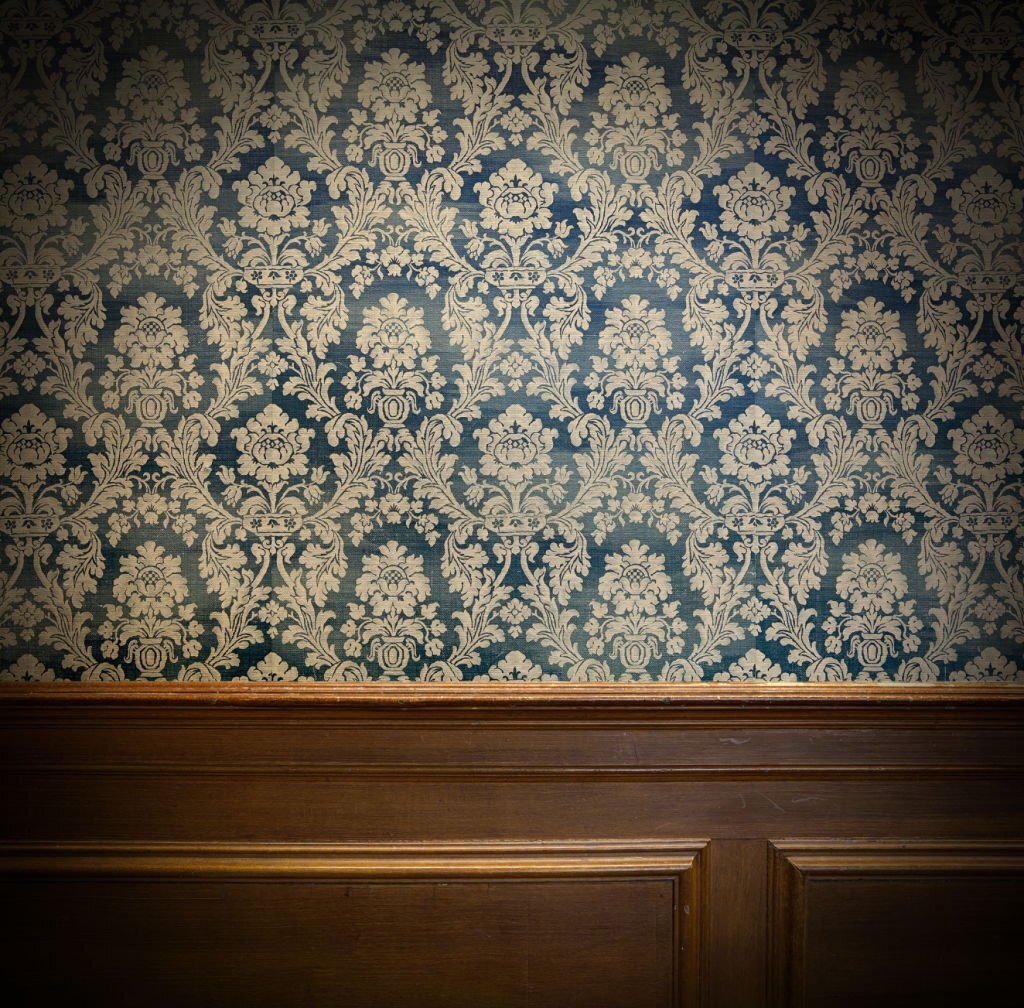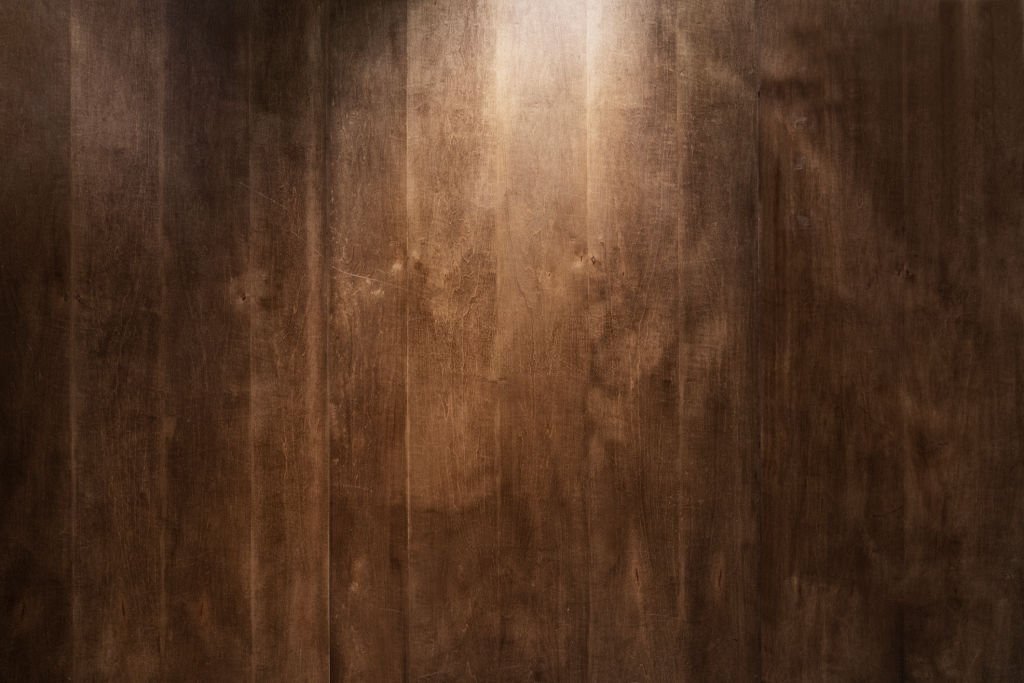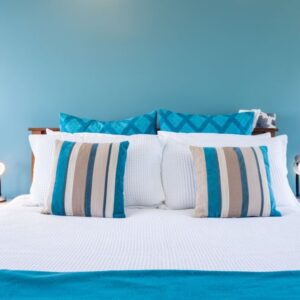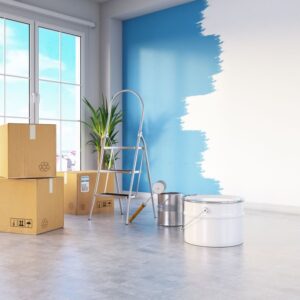Introduction
Adding Wall texture to living room walls is one way to enhance the visual appeal and character of a space by introducing a variety of tactile elements and surface patterns. Textured walls can create a more dynamic and interesting atmosphere by adding depth and dimension to a room.
Purpose of Adding Texture: The primary purpose of adding texture to living room walls is to break away from plain, flat surfaces and create visual interest. Textured walls can transform an ordinary room into a captivating space with a unique personality.
Types of Texture: There are many ways to add texture to walls, each providing a different look and feel. Some common techniques include:
Wallpaper: Textured wallpaper comes in a wide range of patterns and materials. They may mimic natural textures such as brick, stone or wood, or feature more abstract designs. Textured wallpapers are available in peel-and-stick versions, making them easy to install and remove.
Textured Paints: Specialty paints with added ingredients such as sand, silica or small fibers can create a textured finish. Popular options include stippling, sponge painting or dragging techniques.
Imitation Finishes: Imitation finishes involve artistic techniques that mimic natural textures, such as Venetian plaster, stucco, or suede-like effects.
Wall Panels: Decorative wall panels made of a variety of materials such as wood, MDF, or PVC can be installed to add three-dimensional texture to walls.
Aesthetic Appeal: Textured walls can have a significant impact on the overall aesthetics of a living room. They add character, depth and a sense of uniqueness to a space, making it visually appealing and inviting.
Play of light and shadow: Textured walls can interact with light in interesting ways, creating a beautiful play of light and shadow. It can enhance the ambiance of the room and make it feel more dynamic.
Covering Imperfections: Textured walls can help hide minor imperfections on the wall surface, such as small dents or cracks, providing a cost-effective solution to wall repairs.
Understanding Texture and Its Effects
In interior design, texture refers to the perceived surface quality of materials and objects within a space. It is one of the essential elements of design, along with color, form, line and space. Texture plays an important role in creating visual interest, depth and sensory experience in an interior environment. Here is a more detailed explanation of what texture is in interior design:
Definition of texture: Texture is the tactile or visual quality of a surface that describes how a material or element feels or appears to feel. It can be smooth, rough, soft, hard, bumpy, shiny, matte, rough, or fine-grained. In interior design, texture can be both physical (tactile) and visual (perceived visually).
Tactile Texture: Tactile texture refers to the actual physical feel of surfaces and materials in an interior space. For example, the texture of a rough brick wall, a plush velvet sofa, a smooth glass table, or a soft wool rug are all examples of tactile textures. People can experience these textures through touch and interaction.
Visual Texture: Visual texture, on the other hand, deals with the illusion of texture created through the visual representation of patterns, designs, and different surfaces. For example, wallpaper that simulates the appearance of wood grain, a faux stone-painted wall, or digitally printed fabric with a woven texture are examples of visual texture. Even though these textures are not physically tangible, they visually add depth and interest to a space.

Importance of texture in interior design:
Texture in interior design is essential for several reasons:
Enhancing Aesthetics: Texture adds richness, complexity and character to a space, making it visually appealing and appealing. This helps avoid a monotonous or sterile look by providing variety and contrast.
Creating Balance: Texture helps balance other design elements such as color and form. A well-balanced combination of different textures can create harmony and cohesion in a room.
Adding depth and dimension: Textured surfaces and materials create visual depth, making a room feel more layered and attractive.
Setting the Mood: Different textures evoke different feelings and moods. For example, a soft and plush texture like velvet or fur can convey comfort and luxury, while a rough texture like exposed brick can give a space a rustic or industrial feel.
Highlighting focal points: Texture can be used strategically to draw attention to specific areas or focal points within a room.
Tactile Experience: Incorporating tactile textures into an interior allows people to interact and engage with the space, providing a sensory experience beyond visual appeal.
Using Texture in Design: Designers use different materials and elements to bring texture to interior spaces. Some common ways to use textures include:
Materials: Incorporating a variety of materials such as wood, stone, metal, glass, cloth, leather, and ceramics to present tactile textures.
Wall Treatments: Using wallpaper, textured paint or decorative panels to add visual interest to walls.
Furnishing: Selecting furniture with different upholstery, finishes and materials to create a mix of tactile textures.
Accessories: Adding textured furnishings such as cushions, throws, rugs and decorative items to enhance the tactile and visual appeal of a space.
Benefits of Textured Walls
Improved acoustic properties and sound absorption in an interior space refers to the ability of the environment to effectively control and manage sound waves. This includes the use of materials and design elements that reduce unwanted noise, echo and reverberation, creating a more pleasant and acoustically balanced environment. Here is a more detailed description of this concept:
Understanding Sound: Sound is a form of energy that travels in waves through air and other mediums. In a closed space, sound waves bounce off surfaces, causing reflection, echo, and reverberation. These reflections can build up noise, making it difficult to hear clearly or making a space feel noisy and uncomfortable.
Acoustic Properties: Acoustic properties are characteristics of materials and elements that affect how they interact with sound waves. Some materials reflect sound.
Sound Absorption Materials with good sound absorption properties absorb sound waves, reduce their reflections and prevent excessive noise generation. Porous and soft materials, such as acoustic panels, foam, carpet and fabric-covered furniture, are commonly used for sound absorption.
Echo and echo control: Echo occurs when sound waves reflect off hard, smooth surfaces, producing a repeated and prolonged sound. Both echo and reverberation can have negative effects on speech intelligibility, music quality, and overall comfort in a room.
Benefits of better acoustics:
Enhanced speech intelligibility: In spaces such as offices, classrooms and conference rooms, good acoustics help people understand speech better, thereby improving communication and productivity.
Enhanced music and audio experience: In areas such as auditoriums, concert halls and home theaters, proper sound absorption and control enhances the quality of music and audio, allowing audiences to enjoy a more immersive experience.
Stress and fatigue reduction: A quiet environment with controlled acoustics can reduce stress levels and prevent mental fatigue, creating a more pleasant and relaxing environment.
Privacy and confidentiality: In offices and meeting rooms, acoustic treatments can help maintain privacy by preventing sound leakage and ensuring confidential conversations remain confidential.
Health and wellness: Excessive noise levels can lead to health problems such as headaches, sleep disturbances and increased stress. Better acoustics contribute to a healthier and more comfortable living and working environment.
Wall Coverings and Materials

The search for textured wallpaper, fabrics and wall panels involves considering and using these materials to add visual and tactile interest to interior spaces. These elements can enhance the aesthetics and overall ambiance of a room, providing a unique and captivating design. Here is a more detailed description of each of these options:
Textured Wallpapers: Textured wallpapers are a popular choice for introducing visual texture to walls. They come in a variety of patterns, designs and materials, mimicking various natural textures such as brick, stone, wood or abstract designs. Some common types of textured wallpaper include:
Embossed Wallpaper: These wallpapers have embossed patterns that create a tactile texture, adding depth to the wall surface.
Grass cloth Wallpaper: Made from natural materials such as grass, jute, or hemp, grass cloth wallpapers provide a rustic and textured look.
Flocked Wallpapers: Flocked wallpapers have a velvety texture due to the addition of raised fibers or particles.
Beaded Wallpaper: Beaded wallpaper incorporates tiny beads into the design, providing a shiny and textured effect.
Vinyl Wallpaper: Vinyl wallpaper is durable and can have an embossed pattern, making them a practical choice for high-traffic areas.
Textured Fabrics: Incorporating textured fabrics into interior design can add warmth, comfort and sophistication to a space. Textured fabrics can be used for a variety of purposes, such as upholstery, curtains, cushions and throws. Some examples of textured fabrics include:
Velvet: Velvet is a soft and luxurious fabric with a dense pile, which adds elegance and richness to furniture and decor.
Linen: Linen has a natural, slightly rough texture, which lends a cozy and comfortable feel to furnishings.
Chenille: Chenille fabrics have a velvety, plush texture and are commonly used for soft and comfortable upholstery.
Boucle: Boucle fabric has a looped or curled appearance, providing a tactile and visually interesting surface.
Knit or cable knit: Woven fabrics, such as cable knits, provide a comfortable and attractive texture when used for throws or cushions.
Textured Wall Panels: Decorative wall panels are another way to introduce texture to walls, as well as add dimension and architectural interest to a space. Some popular textured wall panel options include:
Wood Panels: Wood panels with different patterns and finishes can create a rustic, natural or contemporary look.
3D Panels: 3D wall panels feature embossed designs and geometric patterns, providing an attractive and modern look.
MDF panels: Medium-density fiberboard (MDF) panels can be molded into a variety of textures and shapes, providing a cost-effective alternative to textured walls.
Metal Panels: Metal panels with embossed or perforated designs can add an industrial and sleek texture to a space.
Cork Panels: Cork panels are not only eco-friendly but also provide a soft and unique texture to the walls.
DIY Texturing Methods
Creating texture using joint compound or stucco is a popular technique in interior design and home improvement projects. This allows you to add depth, character and visual interest to walls and ceilings. Here’s a step-by-step guide on how to create texture using joint compound or plaster:
Required materials and equipment:
joint compound or plaster (in pre-mixed or powdered form)
Large bucket or mixing container
Stirring stick or drill attachment for mixing
Trowel or putty knife (in various sizes)
Water spray bottle
Sandpaper (optional)
Step 1: Prepare the Surface:
Make sure the surface you want to texture is clean, dry, and free of any dust or debris. If the surface has been painted, it is a good idea to lightly sand it to provide better adhesion for the joint compound or plaster.
Step 2: Mix up the joint compound or plaster:
If you are using pre-mixed joint compound, it is ready to use straight from the container. If you have plaster in powdered form, follow the manufacturer’s directions for mixing it with water in a large bucket until you get a smooth and creamy consistency. Use a stirring stick or drill attachment to thoroughly mix the plaster.
Step 3: Test the Texture:
Before applying joint compound or plaster to the entire surface, it’s a good idea to test the texture on a small, inconspicuous area. This way, you can adjust the thickness and technique until you get the desired texture.
You May Also Like: Modern Design Concepts for Everyday Living
Conclusion:
Finally, “The Power of Texture: Adding Dimension to Your Living Room Walls” reveals the transformative potential of texture in the realm of interior design. Delving deeper into the intricacies of texture, we’ve unveiled its ability to go beyond mere visual aesthetics, breathing life and character into our living spaces. Texture serves as a versatile tool, allowing homeowners to create depth, evoke emotion, and establish a unique ambiance that matches their personal style.
Through the various techniques explored in this article, from paint applications to innovative materials, we’ve opened up myriad creative avenues to infuse dimension into our walls. Whether it’s the tactile allure of textured wallpaper, the rustic allure of exposed brick veneer, or the elegant intricacies of DIY plastering, each method empowers us to create a canvas that reflects our individual tastes and aspirations.
The synergy between color, texture and lighting has been highlighted as a dynamic trio, with the potential to completely redefine our living spaces. The careful combination of these elements orchestrates a harmonious symphony that is not only pleasing to the eye but also surrounds us in an ambiance that can be both soothing and invigorating.
Real life examples and testimonials have demonstrated the real impact of textured walls on the overall living experience. From minor tweaks to grand transformations, these stories resonate as testament to the enduring allure of texture. Insights from professional interior designers have provided expert perspectives, guiding us towards a more nuanced understanding of how texture can be used as a powerful tool in the hands of those who design a living space. Looking for something that is not only aesthetically pleasing, but emotionally enriching.






